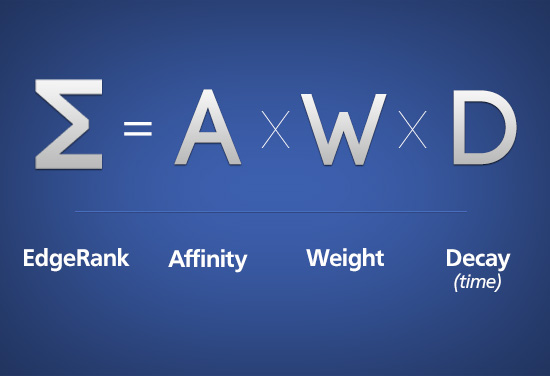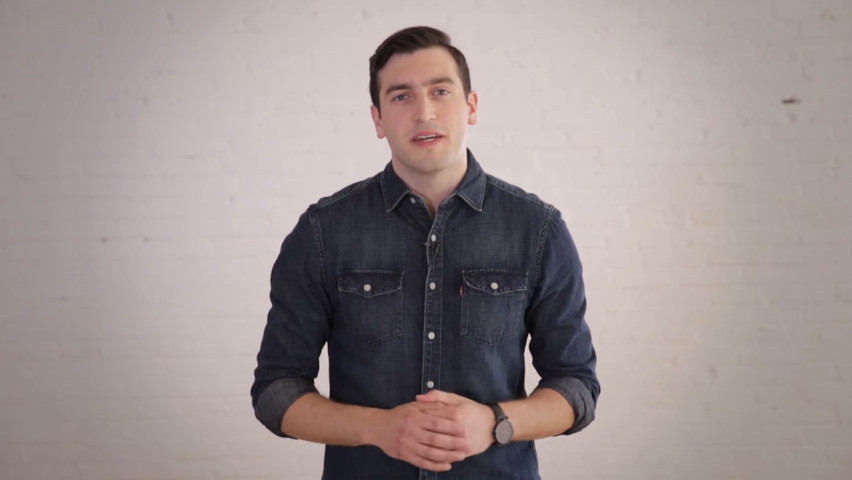Facebook Edgerank Changes And The Facebook News Feed Algorithm

The Facebook EdgeRank was traditionally known as the way Facebook determines which posts its users see in their News Feeds.
In fact, the popular term EdgeRank has now been officially retired and replaced by a more complicated learning-based algorithm, now referred to simply as the News Feed algorithm which of course supercedes any Facebook EdgeRank changes.
EdgeRank’s purpose was to give Facebook users a more personalized News Feed. Facebook continually measure its users activity on their platform in great detail and attempt to provide tightly relevant posts to users based upon the interests they display.
The basic formula for Facebook EdgeRank was affinity x weight x time decay:
Affinity
Affinity is how much interaction there’s been between the user and the content provider. For instance, if you spend more time talking with certain friends on Facebook by posting to their wall, sharing their stuff and even pm’ing, then your affinity with those users will be stronger.
Weight
Weight is basically the level of interaction which a piece of content gets, such as with likes, comments, tags and shares.
Time decay
Time decay is simply a measure of a piece of content’s waning relevance as time passes. As it gets older, the content will then consequently move down the Facebook News Feed.
Facebook EdgeRank Changes to the News Feed Algorithm
Facebook have always been working upon improving their user experience and the EdgeRank formula and now the News Feed Algorithm is being continually improved and worked upon.
For instance, Facebook also looks at global interactions which can outweigh personal interactions if the signal is strong enough. As an example, if Facebook show an update to 100 users, but only a couple of them interact with it, they may not show it in your Facebook News Feed. But if a large number of these people are interacting with it, Facebook might decide to show it to others as well.
The Facebook News Feed algorithm also looks at the types of posts which each user tends to like. If they like, comment on and share lots of photos for instance, then more of these will show up for them in their News Feed. If they click certain types of text links, more posts with these links will show up.
Specific developments of the Facebook News Feed algorithm are that it incorporates;
- how often you respond to a friend or page who posted,
- how often you interact with a post and how often that posts receives likes, shares, comments (affinity) from you and your friends,
- how often you have interacted in the past with this type of post,
- and how often you have hidden or reported this kind of post.
A couple of other News Feed algorithm changes aimed at increasing user engagement are Story Bumping and Last Actor.
Story Bumping
Facebook’s News Feed algorithm will now consider not only new stories since the user’s last visit, but will also include older, previously missed stories and bump them back up nearer the top of their News Feed.
Last Actor
With this Facebook continually tracks users’ last 50 interactions and uses these signals effectively as another ranking bump, albeit a temporary one. The cumulative effect of ‘last actors’ in the News Feed algorithm will also serve to improve interaction and engagement.
The goal of improving the Facebook News Feed algorithm is to maintain and increase user interaction rates so that more users will have the chance to interact with more posts and that resurfaced posts will be more a part of the mix too.
Quality over Quantity
Bearing all this in mind then, it’s clear that Facebook marketers need to focus more on quality over quantity than ever before.
It needs to be said that Facebook’s News Feed algorithm has nothing to do with the algorithm which determines the display of paid Facebook ads.





